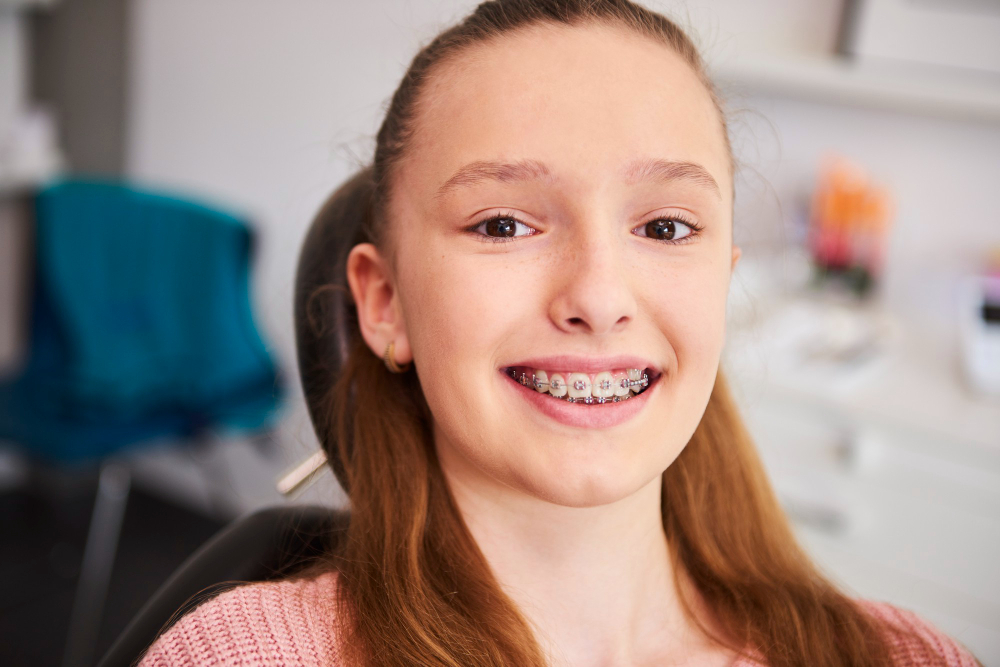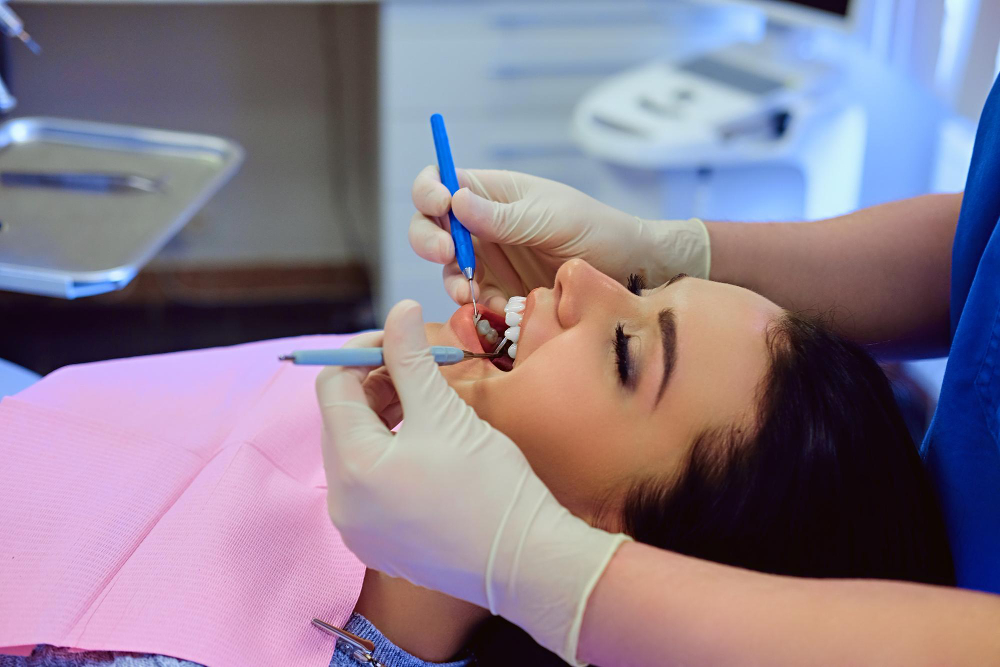When patients consider orthodontic treatment, they often face a crucial decision between different types of braces. The choice between self-ligating and traditional braces can significantly impact their treatment experience, comfort level, and overall results. Understanding the key differences between these two systems helps patients make informed decisions about their oral health journey.
Understanding Traditional Braces
Traditional braces have been the gold standard in orthodontic care for decades. These systems use metal or ceramic brackets attached to each tooth, connected by archwires that apply pressure to gradually move teeth into proper alignment.
The conventional approach requires regular adjustments by an orthodontist to tighten the system and maintain consistent pressure on the teeth. During routine visits, the orthodontist typically replaces the elastic ties and adjusts the archwire tension to ensure optimal alignment. Many patients appreciate the reliability and proven track record of traditional braces, especially when considering the cost of braces in Edmonton and options that provide predictable results.
For a broader perspective, patients can also explore how costs compare between braces and clear aligners across Canada in this detailed guide: Invisalign vs. Braces Cost in Canada.
Patients considering an Edmonton Invisalign consultation often compare these benefits with clear aligner options during their decision-making process.
Advantages of Self-Ligating Braces
Self-ligating systems offer several compelling benefits for orthodontic patients:
- Reduced appointment frequency: Many patients require fewer adjustment visits compared to traditional braces
- Improved oral hygiene: The absence of elastic ties makes brushing and flossing easier
- Faster treatment times: Some studies suggest treatment may be completed 2-6 months sooner
- Enhanced comfort: Lower friction can result in less discomfort during tooth movement
- Better aesthetics: The streamlined design creates a cleaner appearance
Benefits of Traditional Braces
Despite newer innovations, traditional braces continue to offer distinct advantages:
- Cost-effectiveness: Generally less expensive than self-ligating alternatives
- Versatility: Effective for complex cases and severe malocclusions
- Proven results: Decades of successful outcomes and refined techniques
- Customization options: A Wide variety of bracket and tie colors available
- Universal availability: Most orthodontic practices offer traditional systems
Traditional braces excel in treating complex orthodontic cases that require precise control over tooth movement. The elastic ties enable orthodontists to apply exact forces to individual teeth, making them ideal for cases involving severe crowding, significant bite issues, or complex tooth rotations.
The braces cost in Edmonton often favors traditional systems, as they typically require a lower upfront investment. This affordability makes orthodontic treatment accessible to more families while still providing excellent results.
What Orthodontists Recommend
Professional recommendations vary based on individual patient needs and circumstances. Many orthodontists evaluate factors such as case complexity, patient age, lifestyle considerations, and budget constraints when making recommendations.
For patients seeking an Edmonton orthodontist consultation, professionals often explain that both systems can achieve excellent results when properly applied. The choice frequently depends on specific treatment goals and patient preferences rather than one system being universally superior.
City Orthopeds emphasizes that successful treatment relies more on proper diagnosis, treatment planning, and patient compliance than on the specific bracket system used. Their orthodontists work closely with patients to determine which approach best suits individual needs and circumstances.
Making the Right Choice
The decision between self-ligating and traditional braces should involve careful consideration of multiple factors. Patients benefit from discussing their priorities, concerns, and expectations with their orthodontist during consultation appointments.
Treatment complexity plays a significant role in system selection. While self-ligating braces work well for many cases, traditional systems may be necessary for complex movements or severe malocclusions. An Edmonton Invisalign consultation might also reveal whether clear aligners could be an alternative option worth considering.
Budget considerations remain important for many families. Although self-ligating systems may offer certain conveniences, traditional braces continue to provide excellent results at a more accessible price point.
Conclusion
City Orthopeds and other leading practices emphasize that successful orthodontic outcomes depend on proper treatment planning, regular monitoring, and patient cooperation rather than solely on bracket type. Patients should prioritize finding experienced orthodontists who can guide them toward the best treatment option for their specific situation.
Whether choosing self-ligating or traditional braces, patients can achieve beautiful, healthy smiles with proper care and professional guidance. The most important step involves scheduling an Edmonton orthodontist consultation to begin the journey toward improved oral health and confidence.
Frequently Asked Questions
Q1: Are self-ligating braces more expensive than traditional braces?
Yes, self-ligating braces typically cost more than traditional systems due to their specialized bracket technology. The initial investment is higher, but patients may save money through fewer required adjustment appointments. When considering braces cost Edmonton options, patients should discuss payment plans and compare total treatment costs with their orthodontist to make informed financial decisions.
Q2: Do self-ligating braces really reduce treatment time compared to traditional braces?
Studies suggest self-ligating braces may reduce treatment time by 2-6 months in some cases. However, treatment duration primarily depends on case complexity, patient compliance, and individual tooth movement patterns. An experienced orthodontist can provide more accurate timeline estimates during an Edmonton orthodontist consultation based on specific treatment requirements and goals.
Q3: Which type of braces is better for children and teenagers?
Both systems work effectively for younger patients, but the choice depends on individual factors. Traditional braces offer colorful elastic ties that many teenagers enjoy customizing. Self-ligating braces may be easier to keep clean, which helps with oral hygiene compliance. City Orthopeds evaluates each patient’s maturity level, oral hygiene habits, and treatment needs to make informed recommendations.
Q4: Can adults benefit from self-ligating braces over traditional options?
Adults often appreciate self-ligating braces for their streamlined appearance and easier maintenance. The reduced appointment frequency aligns better with the schedules of busy professionals. However, traditional braces remain highly effective for adult treatment and may be preferred for complex cases. An Edmonton Invisalign consultation may also reveal whether clear aligners align with an adult’s lifestyle preferences and treatment goals.
Q5: How do I maintain proper oral hygiene with either type of braces?
Both systems require dedicated oral hygiene routines, including regular brushing, flossing with special tools, and using antimicrobial rinses. Self-ligating braces are generally easier to clean because they have fewer components that trap food particles. Traditional braces need extra attention around elastic ties. Professional cleanings every 3-4 months help maintain optimal oral health throughout orthodontic treatment, regardless of the chosen system.



